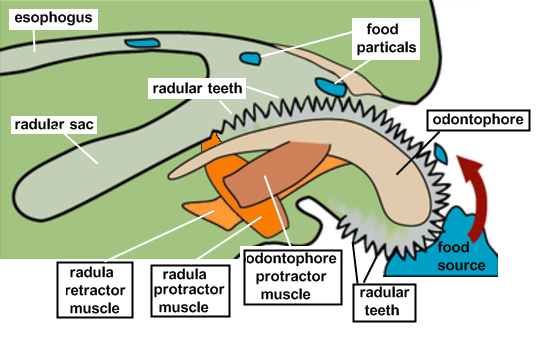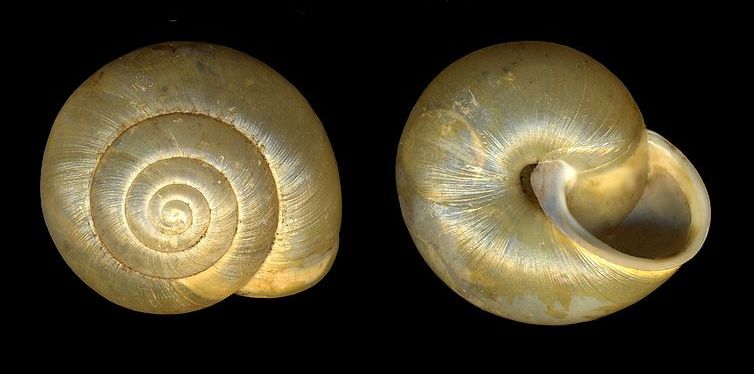Nutrition
Since there is little information known regarding the specific
diet of
Patera clenchi,
the common diet of terrestrial gastropods will be discussed.

Terrestrial snails eat a wide variety of items that are easily
accessible and found in their natural habitat. Most commonly,
snails are herbivores feeding mostly on plants, fruits,
vegetables, fungi, moss, and lichens (BioExpedition, 2012).
There are also a variety of snails that are carnivores in addition to
herbivores, or purely carnivorous (Animal
Planet, 2008). In
tough conditions however, snails may resort to eating dirt if
nothing else is available since dirt is packed with minerals,
vitamins, and decayed matter (BioExpedition, 2012).
There are some snails that are carnivores but eating on plants
and vegetation is present in all (Bioexpedition,
2012).
Due to limited eyesight, snails rely on the chemoreceptors found
on their two tentacles to help sense where food is (Dourson,
2010). Therefore, food is not always easily found so they will
feed on whatever is available in that location, often being
dirt. It is important that snails
receive a lot of calcium through what they eat in order to
maintain their hard, protective, calcium carbonate shell (BioExpedition,
2012). The calcium is most often obtained through ingesting dirt
or grinding on rocks and limestone (Klappenbach, 2012).
Gastropods possess a specialized food processing organ called a
radula, which is similar to a tough tongue (Gillis, 2012). The radula contains many tiny chitinous teeth that are used to rasp
and grind down the food that has been swallowed to allow it to
reach the digestive tract (BioExpedition, 2012). If you ever
listen to a snail eat, it is very noisy due to the radula
grasping and grinding on the swallowed food.
Since their diet consists of very rough and
hard food, the teeth found on the radula often get ground down.
When that happens, the snails will replace the dull teeth with
new ones (Animal
planet, 2008). Some snails have very few teeth, while others
contain thousands of them (Animal
planet, 2008).
With easily available vegetation and food processing organs, no
wonder they are able to
reproduce successfully.
Go
Home
